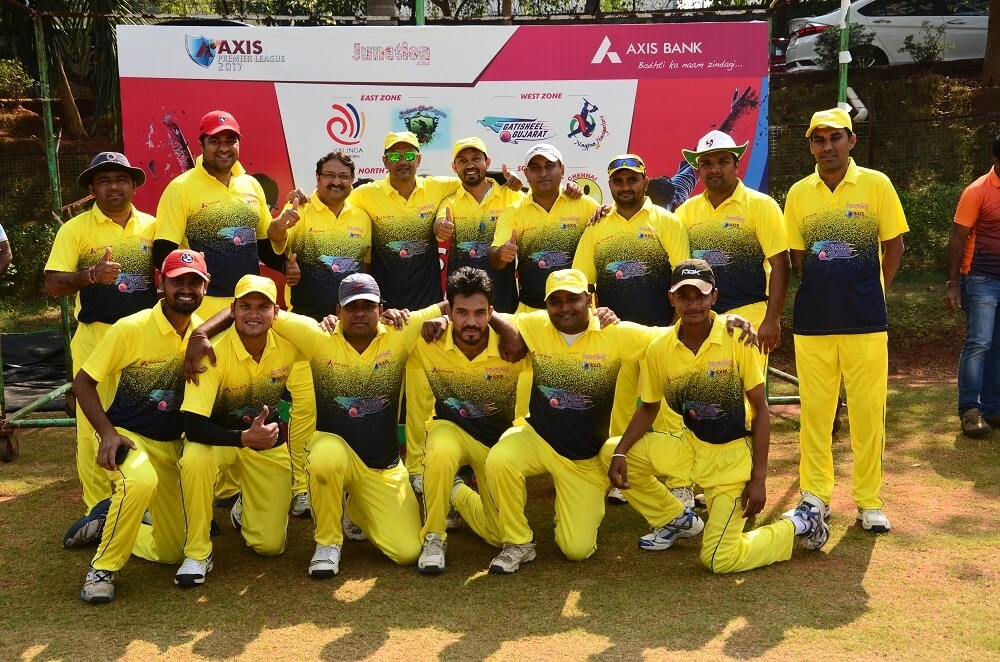The Role of Corporate Partnerships in Driving Sports Development in India
Incorporating sports into HR practices
(Published in the Jan 2017 edition of People and Management Magazine.)
While the biggest components of employee satisfaction at work comprise of sensitive components like salary, career growth, the immediate supervisor. Let’s be honest. The HR managers have little control over these. So, how do you make sure that all employees are happy at their workplace? How do you make sure that the employees are well bonded and work together in unison?
Sports provides a welcome escape from work. It imparts essential skills like discipline, leadership, decision making, teamwork, tolerance, cooperation and good behavior. It assists participants into leadership and management positions. It also helps us develop motor skills, co-ordination, vision, problem-solving and strategic thinking – these are useful skills for academic studies and professional development. Sports is a powerful vehicle that brings individuals and communities together. It teaches the value of efforts and how to manage victory as well as defeat. For many of us who struggle with ‘fitting in’ – sports gives us our first face of confidence which can act as a gateway to many other great things!
It is difficult to make people appreciate the attributes of team work through long screen presentations within the four walls of a training room. The real personalities, attitude and behavior become much more conspicuous when people interact in a causal setting. Hence, employee engagement is very important. Employee engagement is a strong and positive connection between a person and his or her job. Engagement is associated with a wide range of substantial tangible outcomes both in terms of retention and productivity. Well-engaged employees provide better customer service and are motivated to keep the organization’s best interests at heart.
It is no wonder then that increasingly, more and more corporate are leveraging sports seriously to keep their employees engaged. To name a few, these include the likes of Edelweiss, HCL, JP Morgan, Axis Bank. Let’s see a few emerging trends in the space.
From HR-led to Employee-led Engagement Programs
Workplace sports clubs are becoming a popular feature of many employers’ extra-curricular activities, and an important aspect of the reward package. The appeal of workplace clubs is that they give staff the opportunity to take part in activities they might not otherwise have considered, or have found the time to take up. One of the challenges that a lot of employees have, particularly if they are working long hours or have a long commute, is to find ways to balance their work and non-work life. So these types of activities can enable people to, for example, find time to exercise, either at lunch or after work with colleagues who are into the same sports or activities.
What we are seeing over the past few years is that these clubs are typically created and run by employees, but are only funded by employers. HR managers and the agency are now becoming facilitators. A financial services company that we work with recently did a survey amongst its employees to find out the activities that should be conducted for its employees. Post the survey, 6 different sports clubs were formed including running, cycling and badminton and all these programs are driven by employees themselves. No one is excited about a Monday right? We were wondering how we can find excitement around Sunday. So we started doing our weekly football match after our work on Mondays. Suddenly the Sunday evening discussion has changed from “Oh God! Its Monday” to “Has the ground been booked? Who’s in whose team?”
From one-off engagement to year-long engagement
What we were seeing earlier was that HRs were managing one large annual event, which was either a company run, or a pan India cricket or football championship. Over the past couple of years, there has been a shift from one-off engagement to continuous, meaningful year-long engagement. HRs are now building a sports calendar for the year with multiple sports events planned throughout the year targeting different age groups and different interests. Even ‘brain games’ have been introduced in organizations – sports like Sudoku, Crossword, Puzzles, etc. What this has done is, people who are not fit enough to play physical sports are also involved. There is also increasing focus on involving non-participants as part of the program. Whereas earlier, it was a few cricket team members engaged during the program, there are now a bunch of non-participants who are involved through logo, slogan and other competitions.
Separate budget for health & fitness
We are observing that organizations have started allocating budgets specifically for health & fitness. There are plenty of research reports which show that there has been a surge in workplace stress and lifestyle diseases. A fit workforce is important to increase productivity and to reduce employee absence levels. So it is only natural that organizations are spending on health & fitness activities for the employees. Some of the ways in which this budget is spent on are: Employees are provided gym memberships, smart fitness bands like Fitbit, provided entry into marathons and runs and by introducing workplace clubs.





